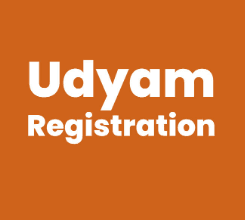Mobile Learning Development: Why Do You Need It?

In enhancing professional development, mobile learning has emerged as a key enabler. As an evolved form of eLearning, it threads together two features – ease of training delivery with targeted learning. On the other hand, a microlearning provider offers bite-sized modules for reinforced learning. However, the advantage of mobile learning is the responsive design and interactive content prepared by mobile learning development professionals and instructional designers. Development is a critical component of every learning content, and in the case of mobile learning, it focuses on learner behavior and preferences and prepares materials to match skilling needs.
Now, let us explore the significance and benefits of mobile learning development.
Mobile Learning Development: Preparations for Small-Screen Experiences
As the world contracts to one single mode of communication – the smartphone, it is seamlessly adapted to various lifestyle needs. From entertainment to searching, mobiles are trusted partners that connect the individual to the content. A natural extension of this seamless use of smartphones is for knowledge/learning. In the case of L&D, this evolution isn’t just about convenience; it’s about delivering tailored learning experiences directly to the palm of your hand or small-screen learning experiences
Mobile Development Learning Framework
Traditionally, mobile training solutions were employed for specific roles, such as training service providers and sales professionals. However, the landscape has transformed. With the rise of remote work and hybrid models, mobile learning has become a quick, easy, and convenient method of eLearning. It seamlessly integrates with existing L&D platforms, synergizing with eLearning modules.
In this context, mobile development learning follows a framework for optimized outcome. These are:
- Providing easy to use web-interface
- Ensure highly-responsive web pages
- Engaging content that transfers topic-based learning
- Complement or supplement traditional learning processes and eLearning
These are standards that mobile learning modules need, in order to offer an optimal learning experience. Moreover, mobile learning can be extended to provide a holistic and effective approach to skill development and reduce stress associated with traditional training methods.
Mobile Learning Development: Shaping Agile learning Experiences
The primary use of on-the-go learning options is the convenience of consuming learning content at any where and at any time. Mobile learning development professionals play a pivotal role in crafting these agile learning experiences with simplified, interactive content. They deploy the following in developing mobile-specific content:
- Contextual Understanding: These developers focus on understanding the context of the learners. This aids in enhancing performance and providing on-the-job support seamlessly.
- Optimal Layout: The content layout is designed to be easy to read and learn, highlighting the importance of instructional design. While graphics are valuable, the focus remains on delivering content that’s both clean and impactful.
- Avoiding Information Overload: One of the hallmarks of professional mobile learning development is avoiding overcrowding or hyper-information density. With learning-on-the-go in mind, these developers ensure that only key information is presented. Moreover, they consider the limited storage space on mobile devices and the fluctuating bandwidth.
- Fluid Technology: Technologies like HTML, mobile content developers create an environment that is fluid, versatile, and responsive. This is crucial for smaller screen sizes, as they demand enhanced fluidity and adaptability.
- Accessibility and Convenience: Development focuses on the needs of diverse learners, including those with disabilities, by ensuring content is accessible and adaptable. Another necessary element is the user friendly interface for ease of learning.
- Microlearning for Bite-Sized Learning: Mobile learning excels in delivering content in bite-sized chunks, known as microlearning. Developers focus on providing content that is simplified to a series of short sessions. They are good as standalone learning concepts and when considered in their entirety or together the bite-sized learning modules cover a full complex concept. This improves retention as well as encourages continuous learning.
- Personalized Learning Journeys: As with eLearning options, individual learning preferences are designed for optimized learning. Developers focus on providing learners several options like setting their own pace, choosing topics of interest, and receiving recommendations based on their past activities. This process helps in personalization, fostering engagement and motivation. It ensures learners remain invested in their educational journey over a period of time.
- Real-Time Feedback and Assessment: Developers focus on interactive content development and provide immediate feedback, instant assessment results enriching the entire learning process. It allows learners to gauge their understanding and identify areas that require further attention. Such a cycle of feedback encourages continuous improvement and enables learners to address gaps promptly and effectively.
- Cost-Effective Learning Solutions: As is unique to eLearning, developers focus on lowering the costs of production of learning solutions. There are no overheads with regard to use of physical resources, printed materials, and travel expenses, common to traditional learning methods.
- Social Learning: Developers are conscious of the fact that mobile learning uses social learning features. Content is developed for sharing between the team members. It also creates a community of interaction and provides a supportive learning environment. It helps executives to share learner experiences and gain insight from other’s perspectives.
- On-Demand Learning Support: Another important factor of mobile learning’s popularity is its instant availability for online support. Developers focus on providing help, FAQs, and on-demand learning support, depending on the subject. The just-in-time assistance enhances job performance and boosts overall productivity.
Mobile learning development uses each of these features to design specific learning modules targeted at achieving skill goals.
Conclusion
With mobile learning a strong contender for the future of learning, it is very important that the development of learning sessions is done along scientific principles. L&D is focused on targeted skill development or on-the-job training, hence the learning sessions should be effective in the transfer of knowledge and skills. Mobile learning development is the most important step towards achieving full-cycle mLearning avenues.
If your organization needs mobile learning solutions that are personalized and curated by expert mobile content developers, Infopro Learning expertise is what you need. Mobile Learning meets all the characteristics that a futuristic learning model shall use: agility, accessibility, and tailored to learning needs, it is time that the mature development lifecycles are followed. As a leading microlearning provider, Infopro Learning leverages the power of mobile learning development to unlock new organizational L&D possibilities.





